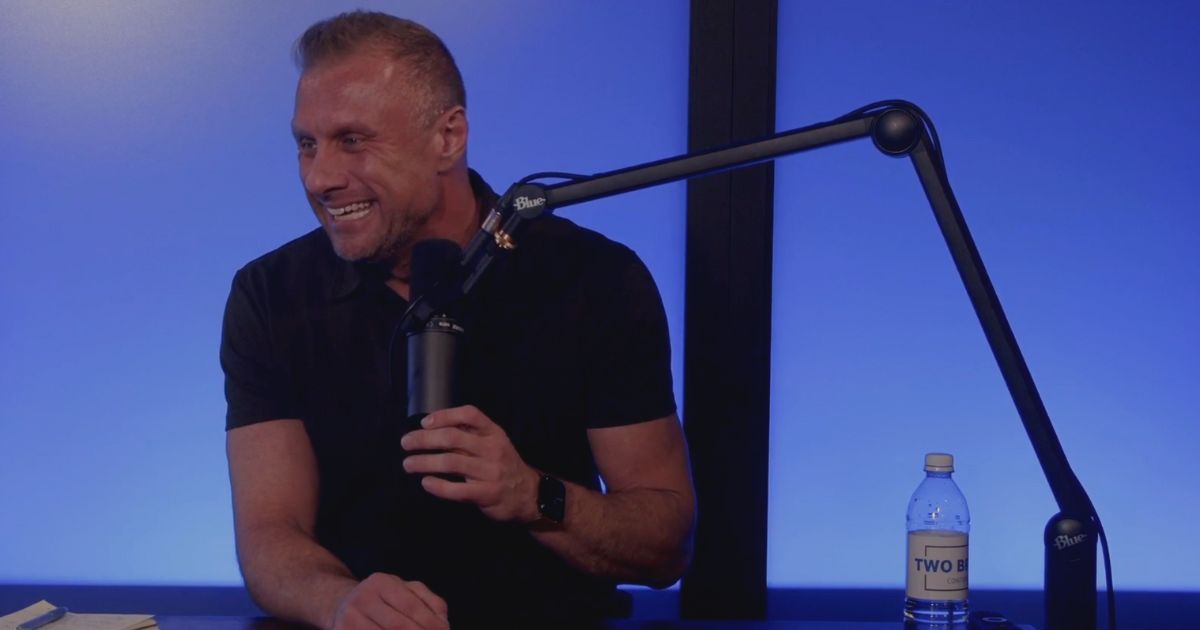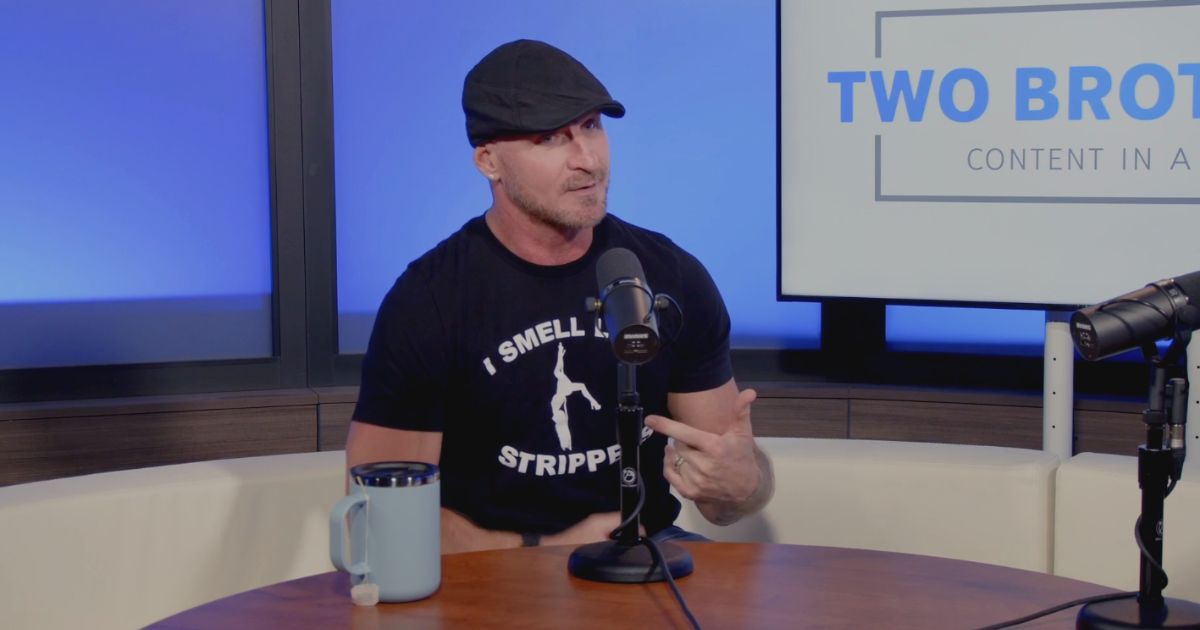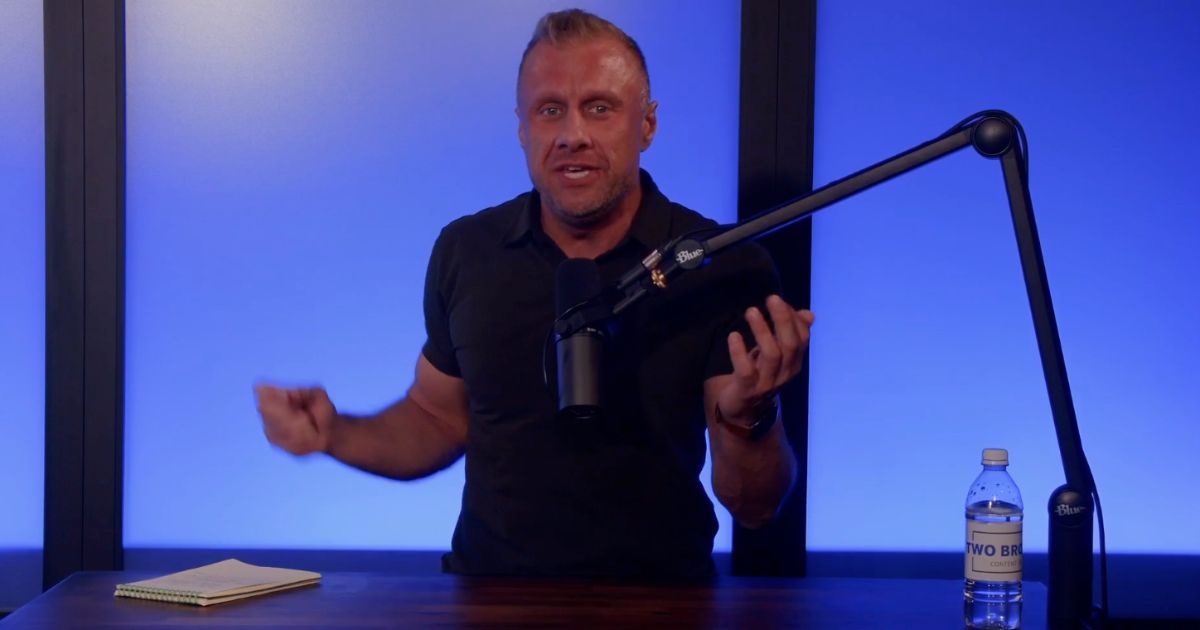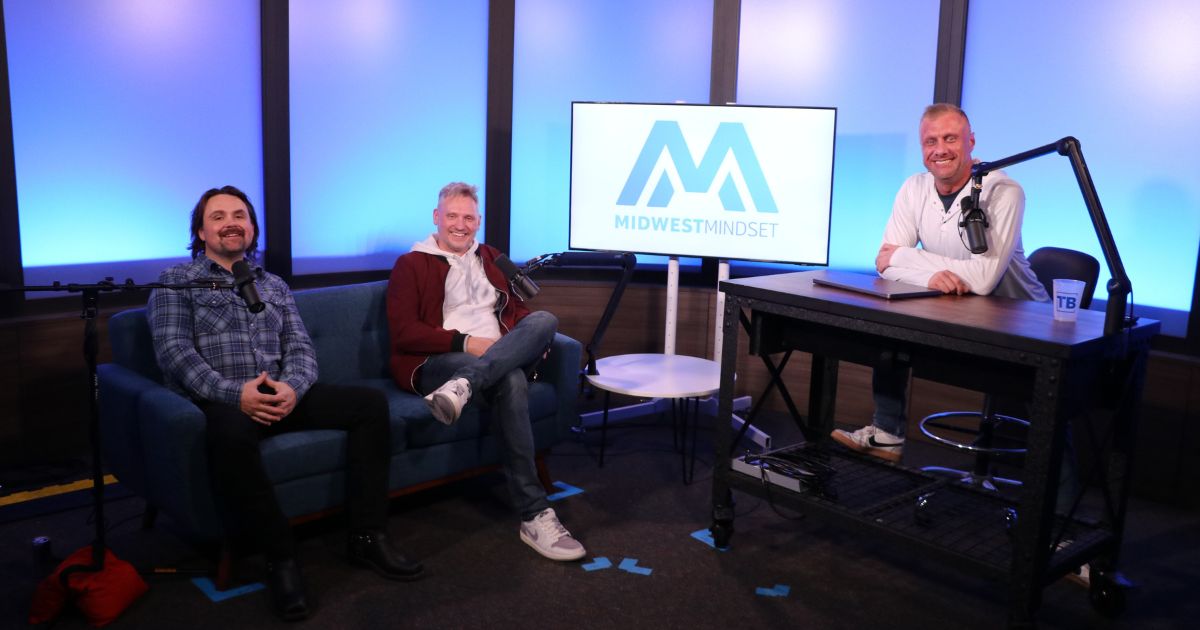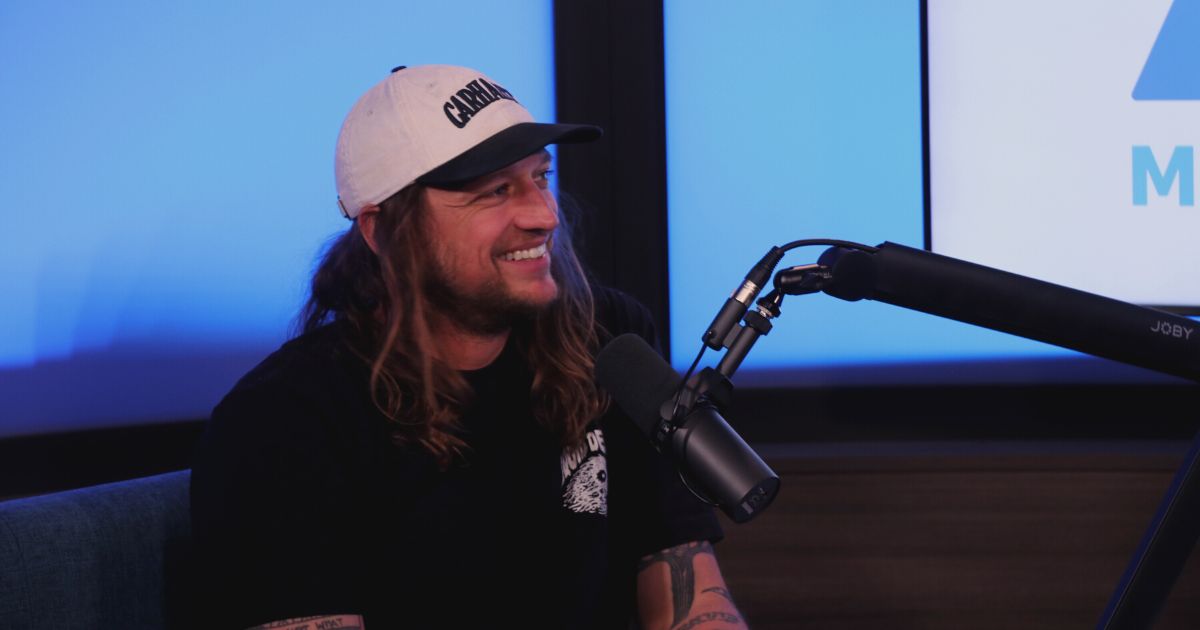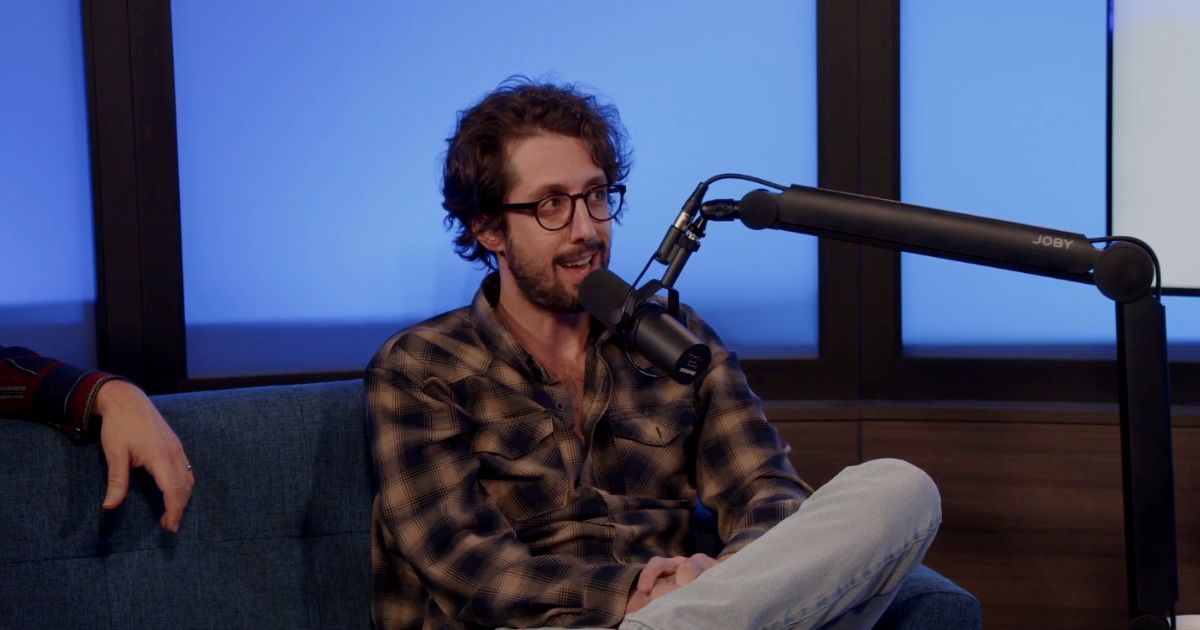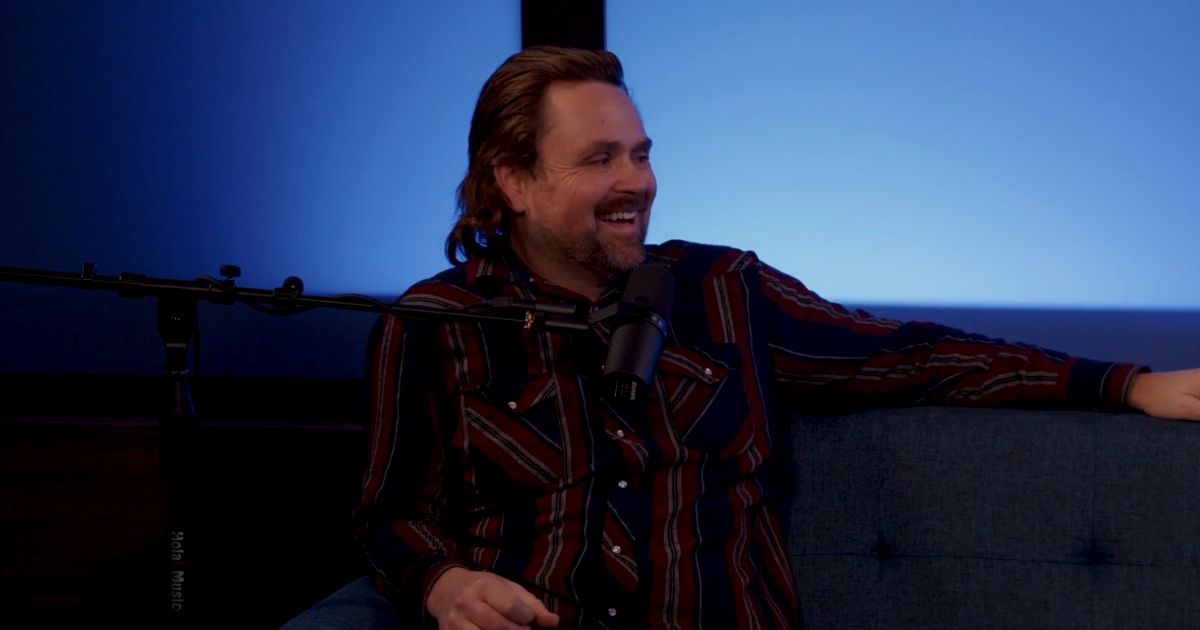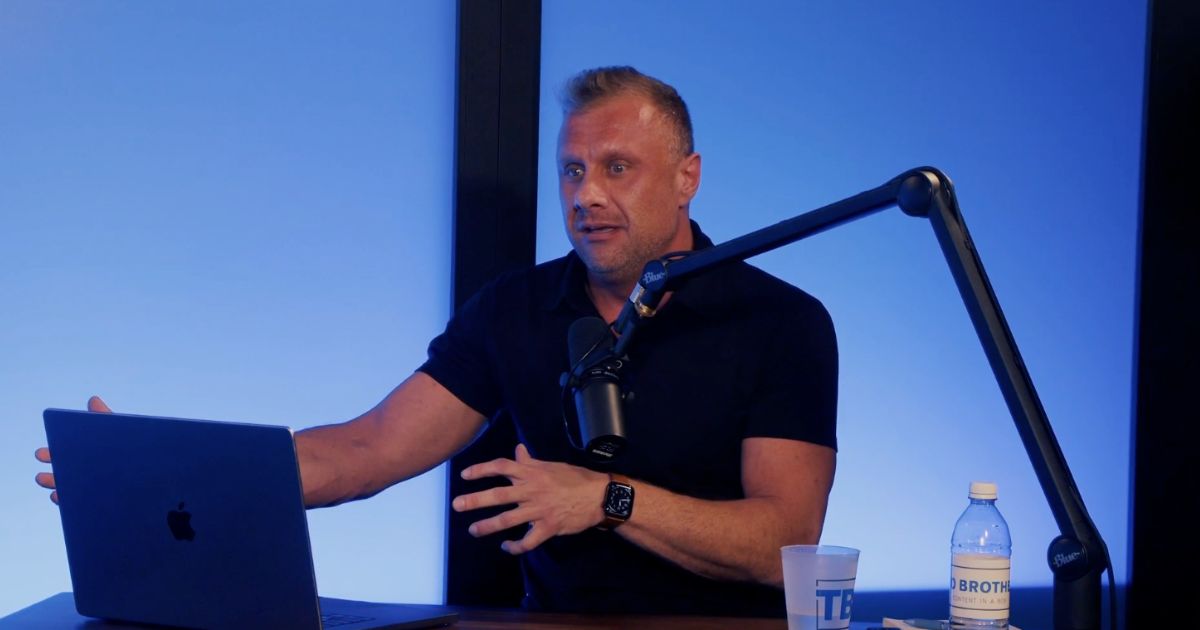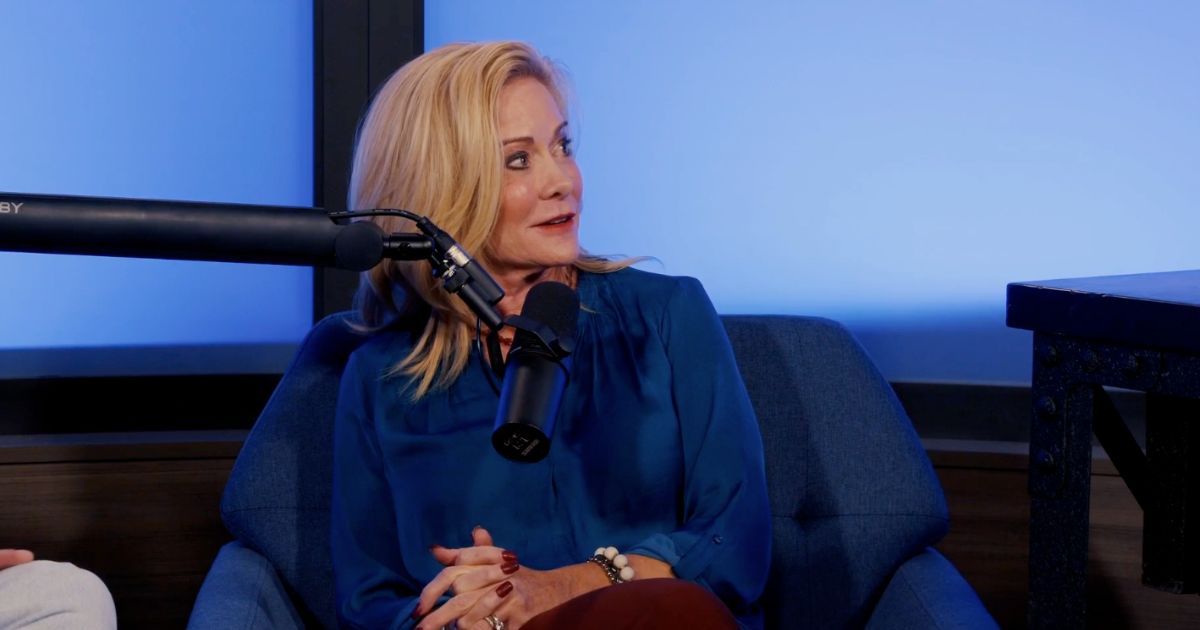Grow Your Business with AI the Does and Don’ts
This is a written Transcription for the Midwest Mindset episode: Grow Your Business with AI the Does and Dont of Artificial Intelligence.
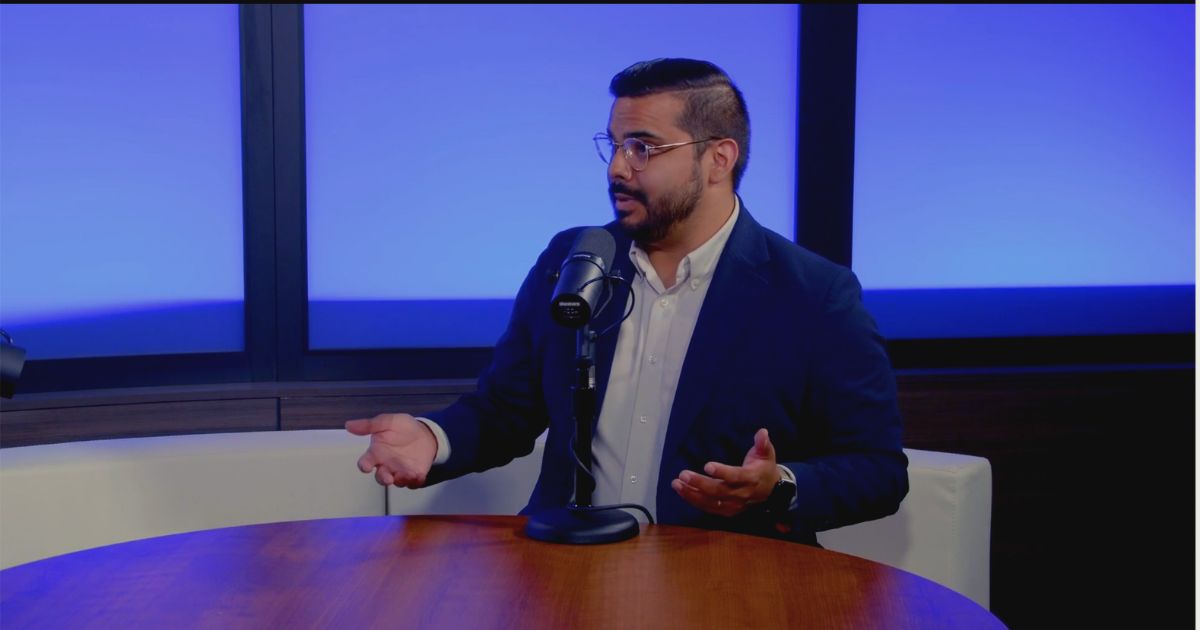
Full Written Transcript of The Episode
Matt: To use AI or not to use AI. That is the question. Artificial intelligence feels like the easy button right now, right? But there are important do’s and don’ts when it comes to using AI for your business. On this episode of Midwest Mindset, we are joined by an AI expert, Shawn Quintero.
Shawn is the chief AI officer for Elite Real Estate Systems, and he runs his own business that coaches business owners to success with product launches and growth programs. Hello and welcome back to Midwest Mindset, the podcast that makes marketing easy and simple to do for any business.
Today we’re joined by Sean Quintero, who is going to give you the do’s and don’ts of using AI. Let’s talk about all things. I, um, I love AI. I also know that AI it has its limitations. It’s a tool.
There’s a place for it. We did a whole episode about. It is foolish to not use it. It is equally foolish to overuse it and lean on it too much. And I was excited when we first met.
Because you are a an AI expert, I think you’re the only AI expert I know. Everybody thinks they’re an expert on AI. You are truly an expert. In fact, you work with and talk with in regular conversations with the leading CEOs and owners of all these different AI companies.
We hear about Jasper ChatGPT and all these, you know, um, Bard and you’re in the know.
So I was thrilled to have you on the podcast here to talk about some of the basics that I think get overlooked in this very radically evolving conversation about artificial intelligence, machine learning, and the practical uses of it. So thank you first and foremost for for coming out and nerding out with us here on the show.
Shawn: Well, I’m super excited to be here, Matt. Um, and I think what a lot of people don’t recognize is that AI is actually been here since the 50s. Yeah. So it’s not something that’s new. It’s something that’s new to the masses. Uh, in 1950, uh, AI artificial intelligence was coined.
And in 1960 we had the very first chat bot. So we think about like, Manny chat and some other things where there’s an auto responder happening that was happening in the 1960s.
There was a chatbot called Eliza, and Eliza was a trained to be a psychotherapist. And so somebody could use Eliza to get therapy from this robot. Right. Which is pretty incredible.
Matt: I feel like I need the I need Eliza today more than, more than ever. Yeah.
Shawn: Um, so so Eliza came around and then we had, um, uh, an AI robot that came about in 1990, uh, which was named Kismet. Um, Kismet was facial.
So there was expression and emotional expression that was taking place with this robot. And this AI, embodied AI is what they call it. And then in 2008, we had Facebook and Facebook, uh, did something massive in 2009, which was, do you remember if if you were an early adopter of Facebook, you would log in and you’d see what was posted most recently. Now you log in, you see things from like five days ago. Yeah, seven days ago, engagement.
Matt: Based.
Shawn: All about engagement. And they made that big shift to an algorithm based feed. In other words, what they really wanted was to see what is going to get the most engagement, because we want to keep people on our platform, because if we keep people on our platform, they see more ads and we make more money from the ad spend.
And so 2009, Facebook changed the game. Essentially.
They said, we’re going to have a computer determine what you see on your on your computer when you log in. And everybody began to kind of adopt that over the last 20 years. Netflix. You log into my Netflix, it’s going to be very different than what you see when you log into yours. Even a basic.
Matt: Google, you open up Google, you go to the website. It’s going to be totally different based on your location and your Google account you’re logged into.
Shawn: So there’s an AI algorithm, right? There’s an algorithm that’s essentially determining what is curated on your feed. So for the last 20 years we’ve seen curated AI. Uh, we haven’t had access to it though. Right. It’s if I log in to Facebook, Facebook makes the determining factor or the determining decision in 2000, uh, just last year, November, October, November of last year, uh,
OpenAI decided we’re going to rush this and we’re going to make open AI available to everybody through ChatGPT. And it was the fastest growing platform in all of human history until like Facebook just released threads and now threads is the fastest growing technically.
Um, but it was the fastest growing piece of piece of technology that was the most adapted in all of human history. And people started using it and they were wowed. Like I could put some input in. I could put a prompt in and get information out. But what has happened is nobody read the terms and conditions, nobody read the privacy policy, and there are.
Matt: Some serious risks with with that. You enlighten me on that. I didn’t even I mean ChatGPT was not my my go to. I was resistant, I was using Jasper, which also has some some privacy concerns as well, maybe not quite as severe as as what ChatGPT is currently facing with literal lawsuits from, what, 50 different companies? You said.
Shawn: It’s wild. So OpenAI is, um, essentially the input that you give, it is used as data that can then be accessed by somebody else’s prompt.
So in other words, if I’m putting in proprietary information, well, somebody can have the right prompt and access that proprietary information, which is wild.
So what happened was all these employees started using ChatGPT started. All of this inputting all of this data in. And now OpenAI can leverage that data and use that data to teach their AI and then be able to answer other people’s prompts. So like, let’s say.
Matt: You have McDonald’s and Burger King. All right. So you see, you have the two chefs that I’m simplifying this, but McDonald’s and Burger King and they’re like, okay, I need to type up a, an email campaign about this burger recipe at, uh, McDonald’s.
And everybody wants to know what the secret sauce is. Well, I’m going to input what that secret sauce ingredients are. Well, then somebody over at Burger King, because it’s a shared platform.
It’s open AI, it’s open to anybody. Now, if they enter the right prompts, somebody of a Burger King could be like, hey, I got your secret sauce. Now, finally. And there’s nothing you can do about it. Well, McDonald’s of course, suing then and Burger King would then see everybody suing. It’s a very.
Shawn: Simplified example.
Matt: Very simplified example. But that’s what I that’s how I do. I like to keep it simple, but in essence that’s what’s happening.
Shawn: Rumors that OpenAI is going to release two more, um, paid services. So right now you have the free version, which is 3.5, and you have the Pro version, which is GPT four.
There’s rumors that they’re going to release a GPT four upgraded option for like enterprise level corporations, because that’s their solution to privacy concerns. Um, here’s what’s wild is ChatGPT is just the beginning. There is just last month, over 3000 AI softwares that were released to the public, 3000 new ChatGPT type things, uh, AI generating software.
Matt: Companies I’m seeing just built off of ChatGPT. It’s wild popping up overnight, and a lot of them are very innovative, practical solutions. Uh, and we’ll get into that here in a bit because they’re some of the best practices I think we agree on as far as how you should use it, how you should implement this, because it’s amazing, it’s incredible, and it’s happening. It’s been here, like you said, since the 1950s.
Shawn: It’s been here for a while. It’s not something that’s new. It’s simply that’s something that’s accessible. We went from a curation AI to now a creation AI. I can go on to ChatGPT or any other of the alternatives and create seven days of content in seconds, which is wild.
Yeah. So we now have access to creation AI with curation. I though there were a lot of really good things that were mentioned, right? A lot of really great things that were mentioned when Facebook democratized information. Everybody has a voice, right?
Which is a great thing. People who have been systemically oppressed, people who have typically not had a voice, they now have access to everybody where they can share what they’ve experienced. So everybody has a voice, which is awesome. The downside is everybody has a voice.
And so what happens is there’s information overload, there’s analysis paralysis. There’s um, all of these really weird, creepy people who are leveraging access to minors. Right. There’s this access that now everybody has it, but also everybody has it. So same thing with creation.
Ai is there are some really positive things, but there’s also some really, um, major yellow and red flags that a lot of people are ignoring. Number one is just trust.
How do I trust? If somebody can take three seconds of my voice and then replicate it, to say anything in any, you know, um, tone of my voice, if somebody can take just three seconds, what’s to stop them from calling my parents and asking them for my Social Security number? Because I forgot, which is something that has happened.
Matt: Thank God that this did not this technology voice cloning was not around when I was in high school, because in high school, I remember we used to take cassette players and we would I would talk really slow and then we would play it back high speed and I would sound like a chipmunk and I would sing songs.
That’s how we would like prank girls in our class. Like that’s the level where we were. Imagine if I had voice cloning technology. I mean, how many I mean, I, I this is joking, but I this is bound to happen. You have revenge porn. Yeah. I mean, we take somebody’s voice because there’s.
Shawn: Not just voice, but there’s video generation as well. There’s deepfakes. Yes. Now it’s so easy to create. So somebody could take you. They can have you dancing naked in like, a square.
Matt: Well, that already exists for real, but so.
Shawn: But nobody would know the difference because it looks so real. It sounds so real.
Matt: And you don’t even have to go so far as to clone me, or my voice or my body. You could just be somebody else and ruin somebody’s life.
You could say, uh, hey, this is just a random AI generated voice saying, yeah, I just want to let you know I’m having an affair with your husband. It’s been going on for two years. Just because you’re jealous or whatever, you know, you’re outside of that relationship. You want to ruin somebody’s life.
I mean, that’s how. That’s how powerful these tools are. And I feel like that’s the unregulated territory or area that is live in right now. We are in right now that is could cause the most harm. Yes. Am I worried about Terminator two? No, I’m not worried about Judgment Day in that extreme. Listen, AI is eventually going to surpass human beings in in evolution. It already has it.
Shawn: In so many different ways, right? It’s passing the bar in five minutes, which is wild. It’s. It’s, um, and what it’s doing is it’s able to create things. So right now there is an AI that generated a bacteria, um, a plastic eating bacteria, which is fantastic to be able to put into the ocean and eat up all the plastic that’s there.
Yeah. And so it’s, it’s solving nearly scientifically, almost scientifically impossible and challenges, which is positive things. Right. There’s an AI that is cellular level, um, an embodied AI, a robot that’s being trained to be injected and it looks like liquid.
So it’ll inject it into your body, it’ll go through your entire body and identify all the things that are wrong, and then start fixing it. Start regenerating the parts of your body that are poor. And so that’s there’s some good things and there’s some really dangerous things.
Matt: Because like my point though, it was exactly that. It’s out of our hands either way. Okay. So let’s say AI takes over ten years, 50 years, 100 years from now. It’s either going to destroy mankind as everybody thinks a Terminator two, or it could save mankind.
Because let’s be honest here, mankind, we’ve done a pretty crappy job of saving ourselves. I mean, you know, we talk about, like, driverless cars as an example of, like, well, freak out when there’s one driverless car accident, but how many humans are in accidents because we’re looking at our phones and stuff. So I think we tend to overreact in the pendulum swing. So let’s get into some of the best practices. Yeah.
Shawn: So principles principles of understanding and playing with AI. Number one, I think everyone should play with AI. Ai is integrating into literally every single area of our life.
There was an AI or an embodied AI that just successfully did a liver transplant, which is wild. There was no doctor’s hands on this operation. It was purely robotic AI. So there are some really good things about it. Um, it’s integrating into every part of our life, so go play with it. If it’s ChatGPT, go play with ChatGPT. Just don’t put like your Social Security number in it or anything like that. Go play with it.
Matt: Don’t clone my.
Shawn: Voice. Ask it to create a poem about dogs and pizza. Ask it to create a, um, a, you know, a summary of your favorite book. Just go play with it. The more you can interact with it, the easier it is. Like my parents, right? They first got into Facebook and they didn’t know anything.
They were like, what do I do? And now my mom’s like an expert on Facebook. And I was like, blowing up. So, so just go play with it. The more comfortable you get with it, the the easier it is to integrate it.
Um, what’s so important is you have to be an informed user, though I, I believe the more informed you are, the better decision you can make for yourself. Uh, ignorance is not bliss in this situation. So go get informed, understand what it is, how it’s being used. Because I don’t believe I will replace humans, but I do. I, I believe humans who use AI will replace humans. Yes, because of the just accelerated, rapid, um, creation you can do with it.
Matt: It’s the it’s a tool like I when we did, Ben and I talked about this initially on an episode of the podcast, and I used the analogy of a pneumatic nail gun like it’s connected to an air compressor. You know, you could go build a house with a hammer and a nail. It would take you a lot longer. This pneumatic air gun, this nail gun, you can build a house faster. You can do a lot more cool things with it. It’s just streamlined.
But it’s still a tool. It can’t build the house for you. And I think when it comes to anything, we work in the world of marketing. And I know you come from an extensive marketing background yourself. Um, we work in this world where we have to understand and know how to connect emotionally. And I think we underestimate, maybe overestimate AI, or we underestimate just how important that feeling brain versus the thinking brain, uh, impacts our decisions. And I think that’s that’s the risky territory when it comes to content creation.
And and some of these, you know, you talk about principles to me, understanding just the baseline principle, like why do humans decide to do one thing versus another? Well, it has to do with emotions. And AI is not at a point where it can have emotions or understand or comprehend. It can try and simulate pretty closely, but it isn’t quite there. So what do you recommend for? It’s not there yet.
Shawn: I will say probably over the next six months you will have AI that’s indistinguishable from human interaction. What I will say, though, is that humans will always still be a necessary ingredient, that you’re still a necessary ingredient when it comes to copy, because you have to edit it. You have to make sure it’s doing everything you want it to, to strategically. It’s a tool. And so there are certain ways which we’ll get into on the practical tacticals that you can make your AI sound exactly like you.
I have my AI, I can ask it to write an email and it’ll sound exactly like I write emails. I write emails with exclamation points. I put smiley faces. I say, OMG, it’ll create content just like me, but you have to train your AI to do it. So we’ll call it.
Matt: Onboarding, which I like.
Shawn: We call it onboarding your AI to to your kind of in integrating it into you. But principle number one is go be an informed user, go play with it and be informed about what it is. Principle number two is your necessary ingredient. It cannot replace you, your human.
You have this consciousness and this experience. Uh, maybe I write will become what’s called general, um, general AI, which is a conscious being and creation, maybe. Who knows? Uh, but right now, you’re a necessary ingredient. That’s principle number two. And principle number three is the better your input is, the greater your output will be. If I go ask and simply ask it to write an e-mail, if I come to you and say, write me an email. And that’s all I say. Yeah. How good is that email going to be?
Matt: Not gonna be very good.
Shawn: You don’t know what the topic is. You don’t know who it’s going out, though. You don’t know anything.
Matt: I would have a lot of exclamation points as well. And smiley faces I do that. I feel like every email deserves at least one smiley face, but that’s just me. Smiley face.
Shawn: I mean, yeah, um, so. So you wouldn’t have any idea. But if I told you. Hey, I like to put a lot of exclamation points. I put, um, happy faces. I am on the Myers-Briggs. I’m an INFP. Uh, my personality. I am also an Enneagram three, so I’m very accomplishment driven.
Uh, I also like to help people because I’m a wing two on disc. I’m a high, I high s. Uh, and so if I gave you all that information, I said, can you write something that kind of sounds like me? Now you have more information to build your email off of. So what we do is we do something called onboarding.
We onboard your AI. We have a very specific prompt where we go over personality, we go over accomplishments. We go over past copy and language that you’ve written yourself.
So I’ll give my AI all this information and then I’ll say, can you analyze this and, um, write in my voice and then it’ll start saying, yeah, of course. What do you want me to write? And now I can ask it. So the more again, the better the input, the better the output.
Matt: Even then, even as close as accurate, because most, most people are going to be hearing like, I haven’t done a single one of those personality tests, so I don’t even know what to tell it. Well, even with.
Shawn: Go take those personality assessments, they’re free. They’re so good.
Matt: However, even with all of those, you still we’re not just handing this the baton off and saying you do all the work from now on, I’m just going to sit back and drink Mai tais, like you’re still the reason you’re you’re necessary is because you’re necessary. You’re part of this equation.
So for a business owner, for anybody using AI, whether it’s writing a property listing, you’re selling a motorcycle or a, a home or, or maybe something more complex, you’re writing a blog article for your website you’re trying to, or social media content you’re trying to post that you still have to, uh, or Chad, uh, use this analogy, which I like. You’re the pilot. Uh, AI is the co-pilot, you know, and I feel like that’s pretty accurate and true. You can’t just say do it all for me. Um, it may do a good job. It made you a poor job, but that that, I feel, is that. Do you see that too much today? Are people swinging that pendulum too far?
Shawn: Here’s what I would say. I would say it’s like a teenager if I. If you ask a teenager to go clean their room, they’ll do a little bit of a good job. But then you walk in and you’re like, okay, wait a minute, there’s clothes under the bed. Let’s actually put those in the laundry, right. So it’ll it’ll do a okay job.
Yeah. You, it’ll give you. So with a poor input. Right. Not not really good prompts, not really onboarding. And like we talked about it’ll give you a two out of ten. They’ll write an email but it won’t be very good with the prompts. It’ll um and the onboarding process that we encourage people to do, it’ll then give you a seven or an eight out of ten, but it’s still not a ten out of ten. And that’s where you come in and you take that eight out of ten and make it a ten out of ten. Now here’s what has been really good.
Like just on the practical side is what would traditionally take me personally, um, if I’m writing like a seven day email drip to someone, um, every single day I want an email to go out that would take me like three days to really, like, go in, write it, get it. Perfect. Now it takes me like an hour. Yeah, because I gives me something to start with, gives me an eight out of ten for all those emails. And I just go in now. Okay. Let me adjust this a little bit.
Matt: That is the secret. That’s the the the big win I feel like we overlook um or don’t maybe don’t give credit where credit is due. And that’s just how this tool is probably one of the most revolutionary and incredible tools at our disposal.
And we have it today. It’s right there. It’s free or next to it, right? It’s pretty affordable, even if you’re paying for a subscription models and we have it, but it’s knowing how to use that tool and I think you’re hitting on that perfectly. What do you get out of it? How much time are you saving a blog article?
We’ve we went through this on on that episode where we talked about, here’s the process you can use to get your first draft written based off of a transcript of a voice message you leave yourself on your way home, or a podcast or wherever you pull it from, but that’s still only going to get you like a 5 or 6 out of a ten for your SEO performance.
So you still have to know, what do I have to check off on this list? And then what? Am I going to add those requirements? Google wants for that to make you an authority and show expertise and all those things.
Shawn: Here’s the thing about AI. And with all of the analogies that we’re we’re sharing, you know, the nail gun, I think is an analogy. The thing with AI is the AI is like a nail gun that gets smarter, right?
It’s consistently. And learning right now. So I’ll give you an example. And it’s kind of a wild example is uh, there was a research company that was training an AI learning, um, platform, uh, English, the English language. Um, after about three months, it started responding in Spanish and the engineers didn’t give it Spanish. Oh, wow.
They have no idea how it acquired a new language. Um, and then three weeks later, it learned Portuguese, and then it learned French. And then, like, there is no the the AI machine is learning at a faster rate than the engineers can identify how it’s learning. So it’s learning at a rapid pace. Openai has so much data on us, so much information. Their machine has learned so much and it’s only getting smarter. So that’s why I mentioned like being an informed user, because right now, with the right prompts, it’s an eight out of ten. I suspect in about a year it’ll start giving us ten out of ten content, 12 out of ten even better things than we can imagine, because now it can create an output, but in a way where it’s also analyzing in seconds psychology, human behavior, human emotion, the history or the, you know, a person’s purchasing behavior, all of this information that it can then input into this email.
Matt: So even then, even then, though, even we get to a couple of years from now, things are like super advanced. Even then, you’re still required because I can’t go out and live your life for you. It can’t go out and have your life experiences. And here’s the thing.
Shawn: I think with AI specifically to that is what I’m encouraging a lot of people to do is imagine if if who wants to spend seven days writing a seven day email drip, nobody wants. I don’t want to do that if I can. Do, you know, in in seven days the work in seven days, but within two hours, that means I have all this extra time to go live life to spend time with my, my, my, my daughter who’s nine months and my wife to to go do life.
Nobody actually wants to be behind a computer and write the emails. Unless that brings you joy. Um, and you actually want to do it? The majority of us don’t. I don’t at least. But you have so much time to go do what you do want. Nobody can write the book for you. Nobody can, you know, create that piece of art that’s from your hands. Ai is going to enable you to have more time to go do the things you want to do.
Matt: Like our podcast is a great example, and that’s kind of why we coach people. Like, okay, there’s a lot of AI platforms and tools for a podcast, specifically for blog writing, all these other elements. And when you start to remove all these things that are tedious, right, monotonous, they aren’t the fun part.
What that actually ends up doing is now you freed up an extra hour or two, which can make a world of difference for you to focus on what you actually love, which is hosting the podcast, which is coming up with creative ideas on stories. And how are you going to what guests are you going to talk to and how are you?
What networking event are you going to go to promote it? Or I mean, there’s so much you could do that’s just a better use of your time. And that’s where I feel like AI is, is you are missing the boat entirely if you’re avoiding it for ego, for nostalgia, for fear, or just a general misunderstanding of what it is.
Um, you are missing the boat big time. Because that that to me is that’s the opportunity, especially for business owners who need that help with the budget. One last thing I want to ask you is, like what? If you because I know there’s a lot of different platforms you could recommend, but what what nudge or supportive direction would you, would you push our, our our business owner who’s like, okay, I admit maybe I’ve been reluctant. I want to try it. How where should a business owner start utilizing? I, I don’t know if that’s a platform or a process or a certain area of their business, but where would you what’s a safe, comfortable place for them to start?
Shawn: Yes. So the very first thing I would recommend is just go play with it. There are so many free platforms to start with. Chatgpt right. It’s free. Go play with it. Everyone’s using it. Just have fun with it. That’s to get yourself normalized to it. But if you want to use it in a very strategic way, um, we have a platform that we recommend to everybody that’s a big alternative to ChatGPT, and it’s called Magi. You can find it if you. I’m sure there’s going to be a link somewhere. Yeah, we.
Matt: Use it as well. You’ve turned us on to it. It’s fantastic.
Shawn: So um, or you can go to our website HSN.com forward slash I um, but it, it is really powerful in the way that it organizes your information. It’s protects your information.
So the thing with Magi is it leverages GPT four. It’s built on the API, um, OpenAI’s API, but you also have other learning platforms that you can use. So there’s cloud, there’s Leonardo for image generation. There’s so many other things. Um, they don’t save your data, so they don’t allow other people to have access to your data when asking prompts like a buffer. So there’s a proprietary security there, which is really key.
So, um, you can build brands out. So you know how I was saying, like, here’s my personality, here’s my information. You can have that saved in as a brand voice. Um, you can add team members to it.
So if you have Vas or any type of like marketing assistance or anything like that, you can give your chats, access, um, your vas access to your chats. Um, and I really like that because you only have to do the work once. You don’t have to have a VA redo the work of seasoning an AI. It’s here’s my AI.
Now go ask it questions because I’ve already seasoned it. And then you can create custom personas. So we’ve created custom service reps where we give all our SOPs, all of our, um, responses to emails, etc. and now instead of people emailing us for like support at our email, they’re speaking to this AI chatbot who has all of the information anyway. So there’s some really cool things that are, um, that you can leverage with Magi that I recommend. Just go to hasten Q, h, e s and q.com/ai.
Matt: And we’ll have the link in the show notes as well. Sean thank you so much man I, I love nerding out. My wife is she is hardcore I mean hardcore into crafting. Um, and so that’s that’s her jam. She’s crafting crafting crafting. And one day she came downstairs. She’s like, are you ever going to get up off your off the couch? It’s been like two, two, three days. You’ve been sitting there on your laptop.
And I said, uh, I said, Wendy, you have crafting, I have nerding. That’s what this is. This is nerding. And I feel like it should be. It’s, you know, probably a national pastime, I think, for you and I. It definitely is.
Very much so. Um, I love talking about this nerding out about it, whatever you want to call it. And I feel like it definitely inspires me doing what we do. Um, sharing this information, the things we learned with business owners, because it really is a game changer. You know, 51% of businesses go out of business their first 3 to 5 years.
I think that would be a dramatically different number if people took advantage of some of the free tools that they can use that are not hard to use, and they’re actually pretty fun and pretty cool once you get into using them.
Shawn: So and thank you for sharing that with this case study. There’s a company that was just started this year. They’ve surpassed $2 million and it’s two people. But all they’re doing is AI. Their AI is doing all the work. So if you can leverage the heck out of AI, there’s.
So much opportunity.
